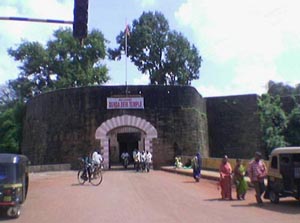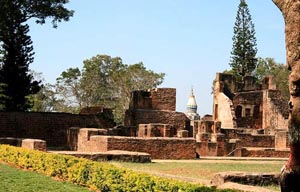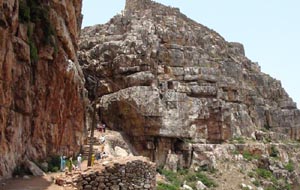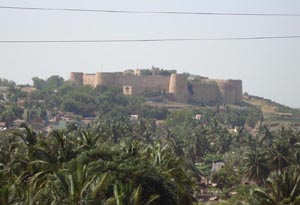Belgaum Monuments - Historical Places to Visit in Belgaum
Historical Monuments / Forts / Palaces / Places to Visit in Belgaum
Here you can check list of names and information on famous historical forts / palaces / monuments / places to visit in Belgaum, Karnataka, India. These famous monuments of Belgaum are most visited and most sought after best tourist places. You can also find images of Belgaum monuments / places / forts / palaces.
Belgaum Fort had battlements which were developed for preventing attacks from invading forces. The fort has oval structure and is bounded by deep and extensive channel exhumed in soft red stone. The exterior of the fort is characterised by comprehensive supports of about 32 feet from the foot of the channel. The interior of the fort has large ground with 1000 yards length and 800 yards breadth.
The Kittur Fort was constructed by the fifth monarch hailing from the Kittur dynasty, Allppa Gowda SarDesai during the period of his rule that is 1660 to 1691 A.D. The mentioned fort was possessed by Rani Chennamma along with the Desai Marathas of Kittur. Rani Chennamma was a woman warrior of Lingayat religion who took violent action and resisted the British in the year 1824. A majestic palace was also erected within the fort where he resided. The construction of the fort was made with the usage of Black coloured basalt rock which was found in abundant quantity in the adjoining regions of Kittur.
Parasgad Fort is a crumbling fort which stands on the southwest verge of a hill. Underneath the hill, there is plain ground of black soil. The sight of the hill along with Parasgad Fort is quite impressive. Perched on the top of the fort, there is a small temple which is in ruined condition.This temple belonged to a Hindu god named Maruthi. About hundred steps below the fort, there is Yadravi village which is also known as 'Elarame', according to a caption found on a platform near Bharamappa temple of the village.
Saundatti Fort is also termed as Savadatti Fort. The most interesting feature of this fort is the existence of various temples. Among them, the most popular temple is Renuka temple, also known as Yellamma temple. Moreover, the fort is also popular for the fair which is organised in the temple namely Yellamma Jatre. The temple is devoted to lord Shakti.
- Bangalore Monuments
- Bagalkot Monuments
- Belgaum Monuments
- Bellary Monuments
- Bidar Monuments
- Bijapur Monuments
- Chitradurga Monuments
- Coorg Monuments
- Dakshina Kannada Monuments
- Gadag Monuments
- Gulbarga Monuments
- Hassan Monuments
- Mysore Monuments
- Raichur Monuments
- Uttara Kannada Monuments
- Yadgir Monuments
- Andaman Nicobar Monuments
- Andhra Pradesh Monuments
- Assam Monuments
- Bihar Monuments
- Chhattisgarh Monuments
- New Delhi Monuments
- Goa Monuments
- Gujarat Monuments
- Haryana Monuments
- Himachal Pradesh Monuments
- Jammu and Kashmir Monuments
- Karnataka Monuments
- Kerala Monuments
- Madhya Pradesh Monuments
- Maharashtra Monuments
- Odisha Monuments
- Punjab Monuments
- Rajasthan Monuments
- Tamil Nadu Monuments
- Telangana Monuments
- Uttar Pradesh Monuments
- West Bengal Monuments



